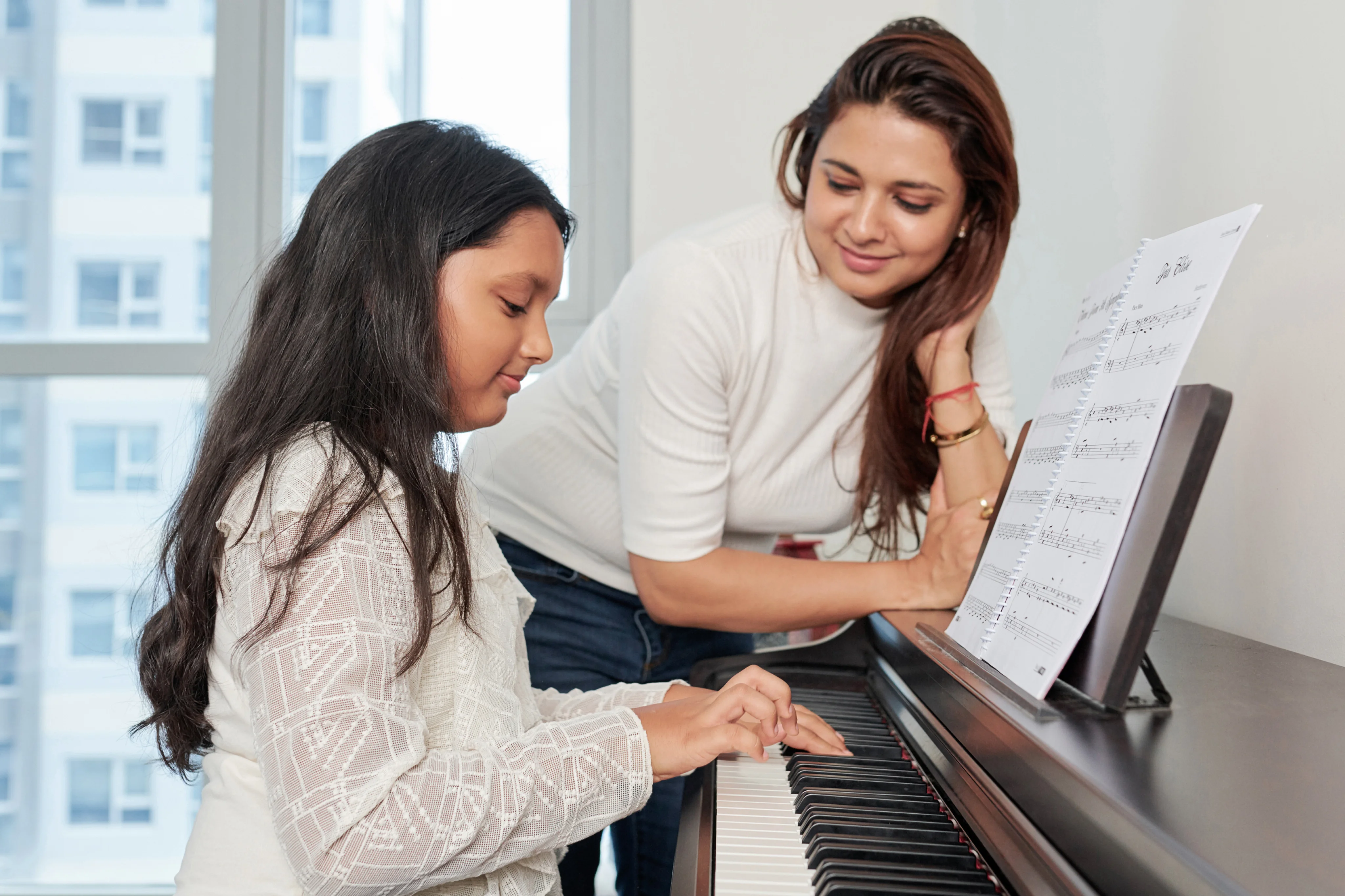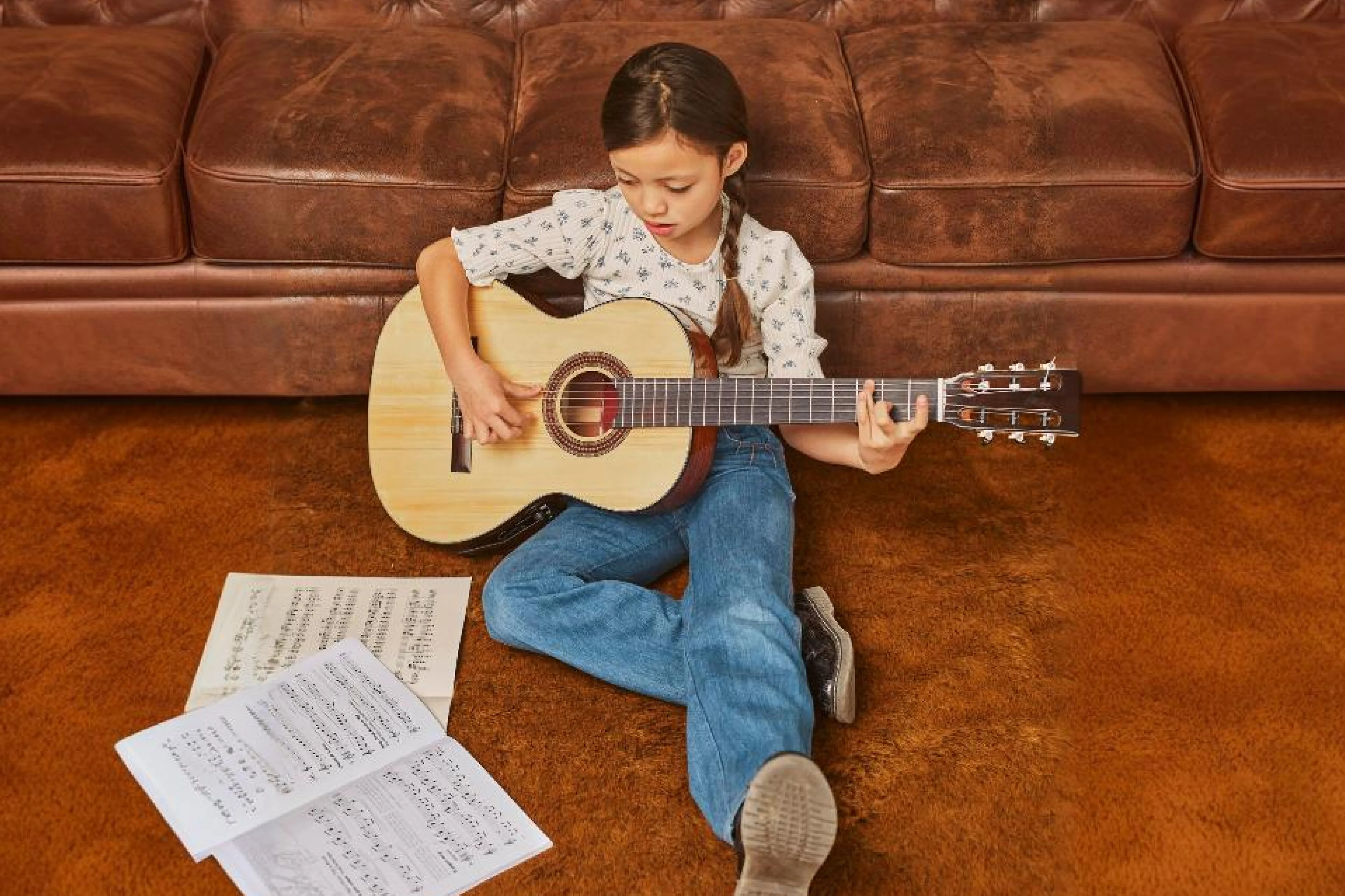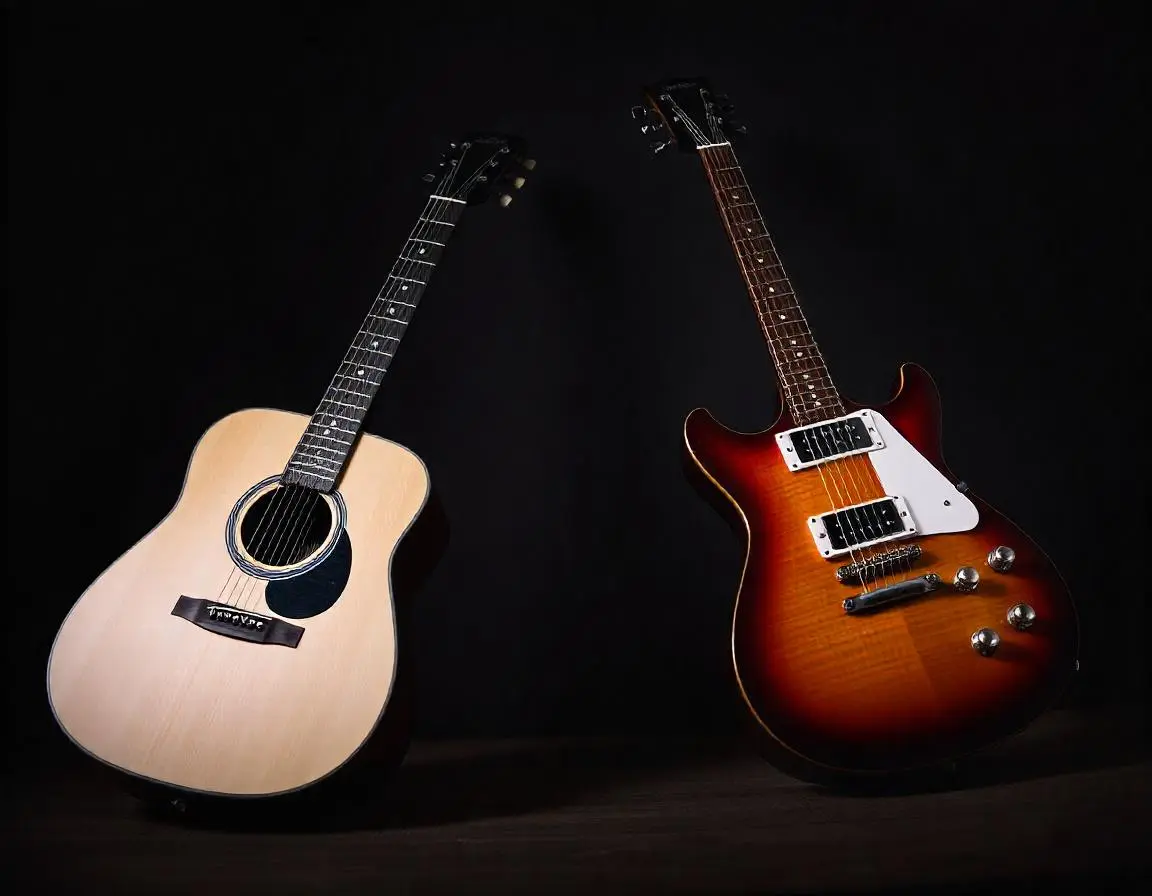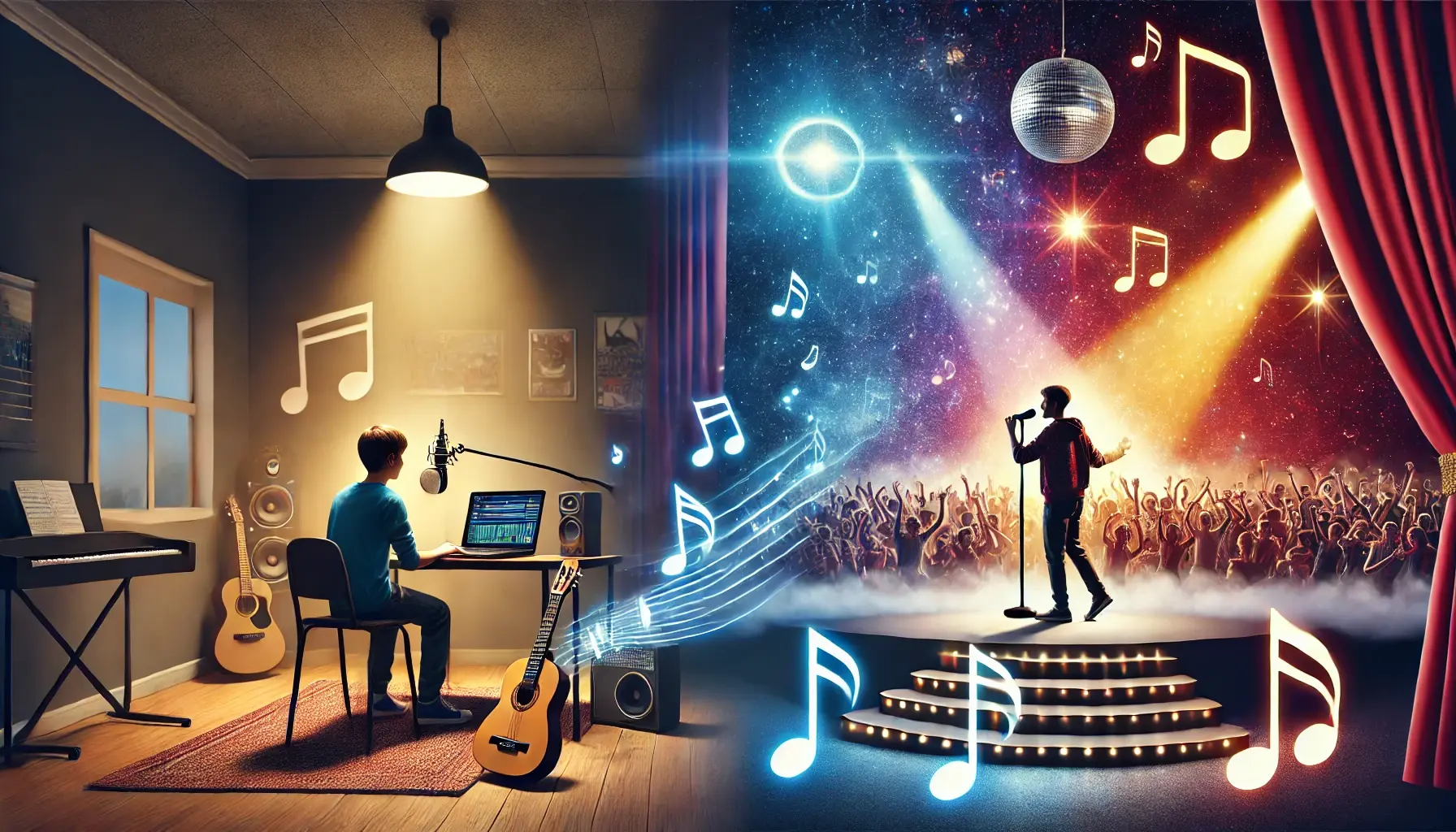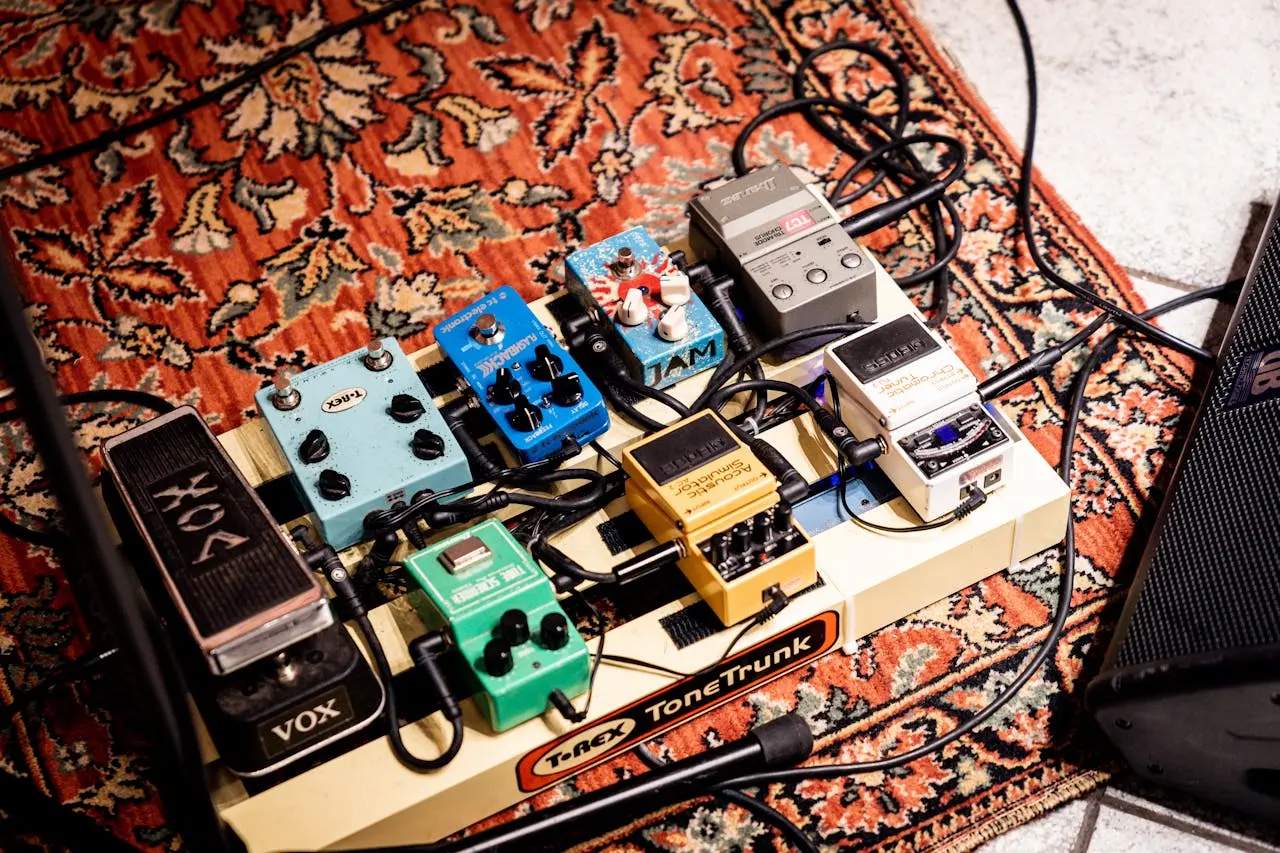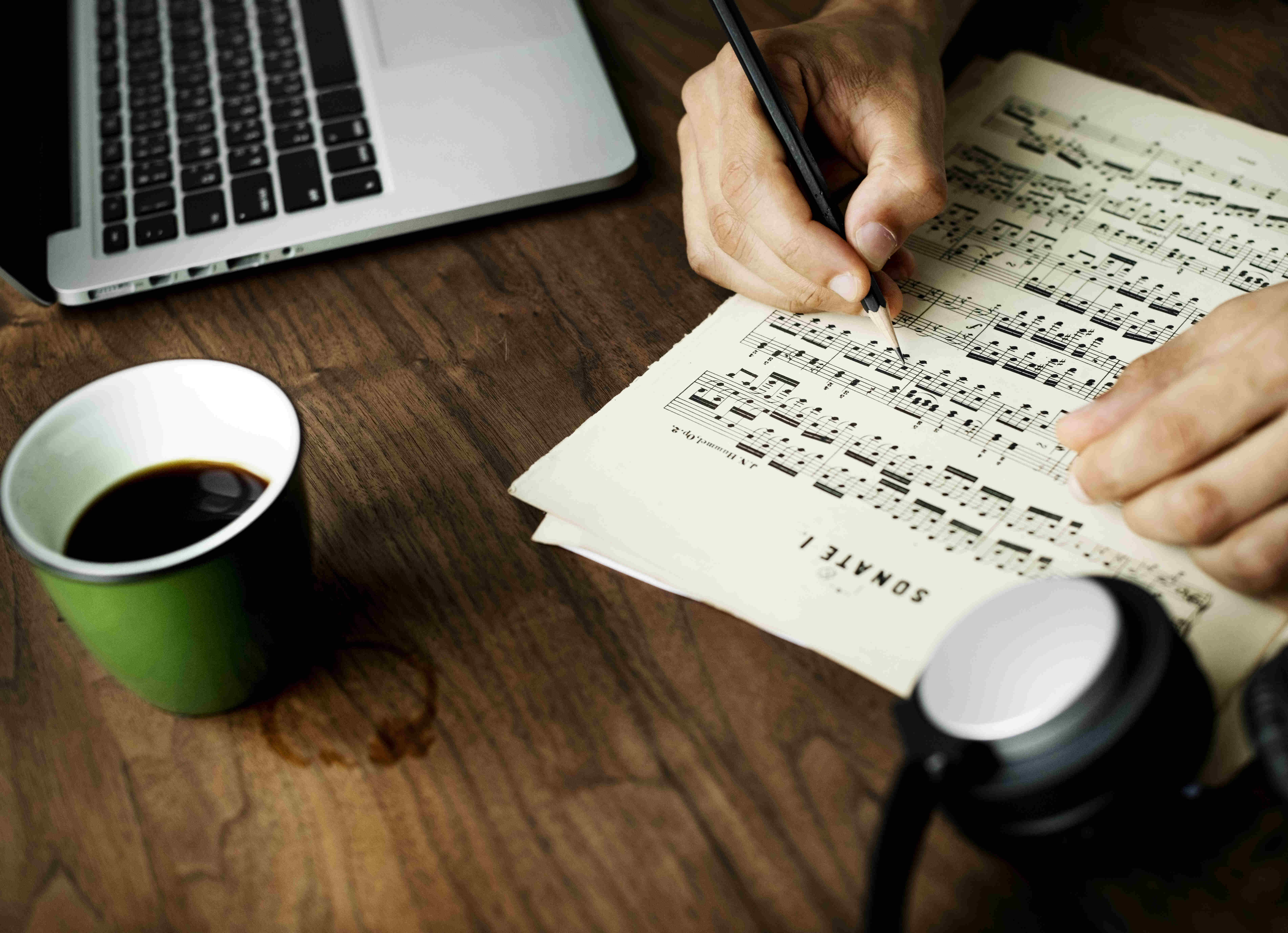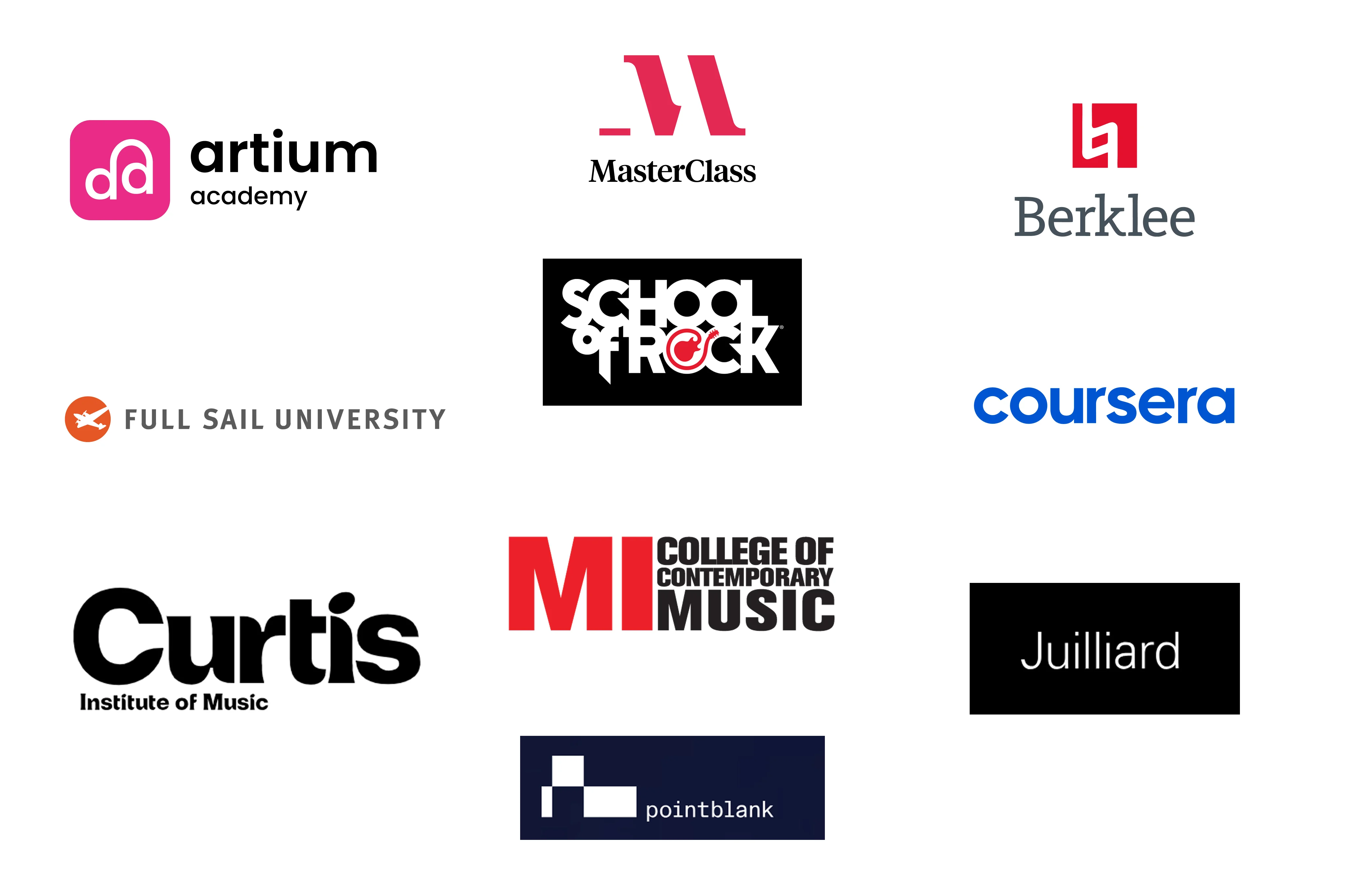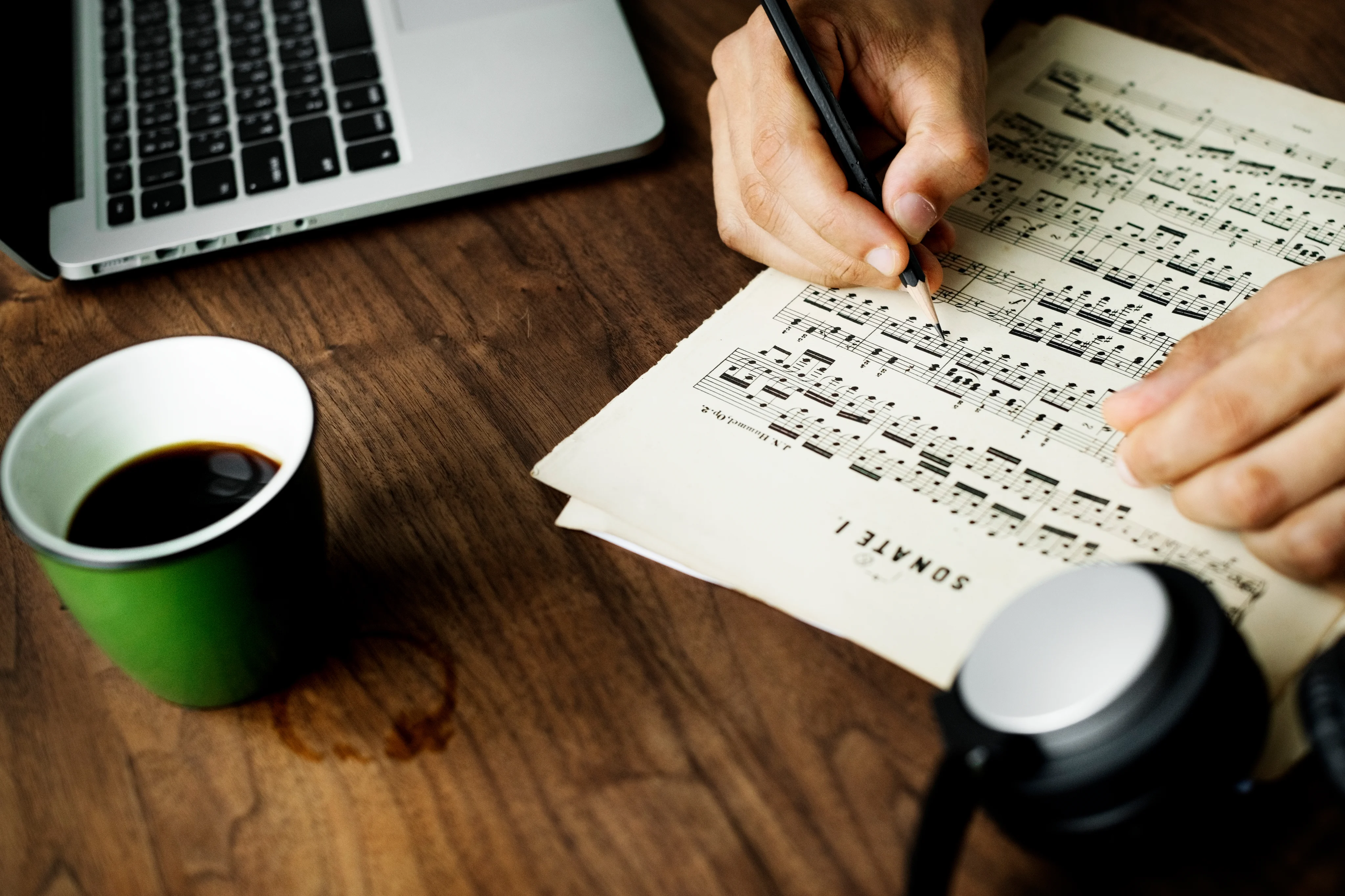If you’re interested in learning the piano, then you are in for a life-changing experience!
However, before you begin, you must choose the right type of online piano lessons and a piano that meets your learning needs at that moment.
With a plethora of options to choose from the types of pianos, it can be overwhelming to decide which one suits you the best. Below, let us understand the differences that will help you make an informed decision, one that aligns with your overall goals and budget.
We will also understand the key differences between the different types of pianos and help you choose the right one. Whether you’re a beginner or upgrading your current instrument, knowing what sets each piano apart is essential.
By the end of this guide, you’ll have a clear idea of which piano best fits your style, space, and musical goals.
What Differentiates Upright, Grand, and Digital Pianos?
Different Types of Pianos: Characteristics and Dimensions have distinct features that cater to different playing styles, space constraints, and budgets.
Let’s explore below:
Upright Pianos
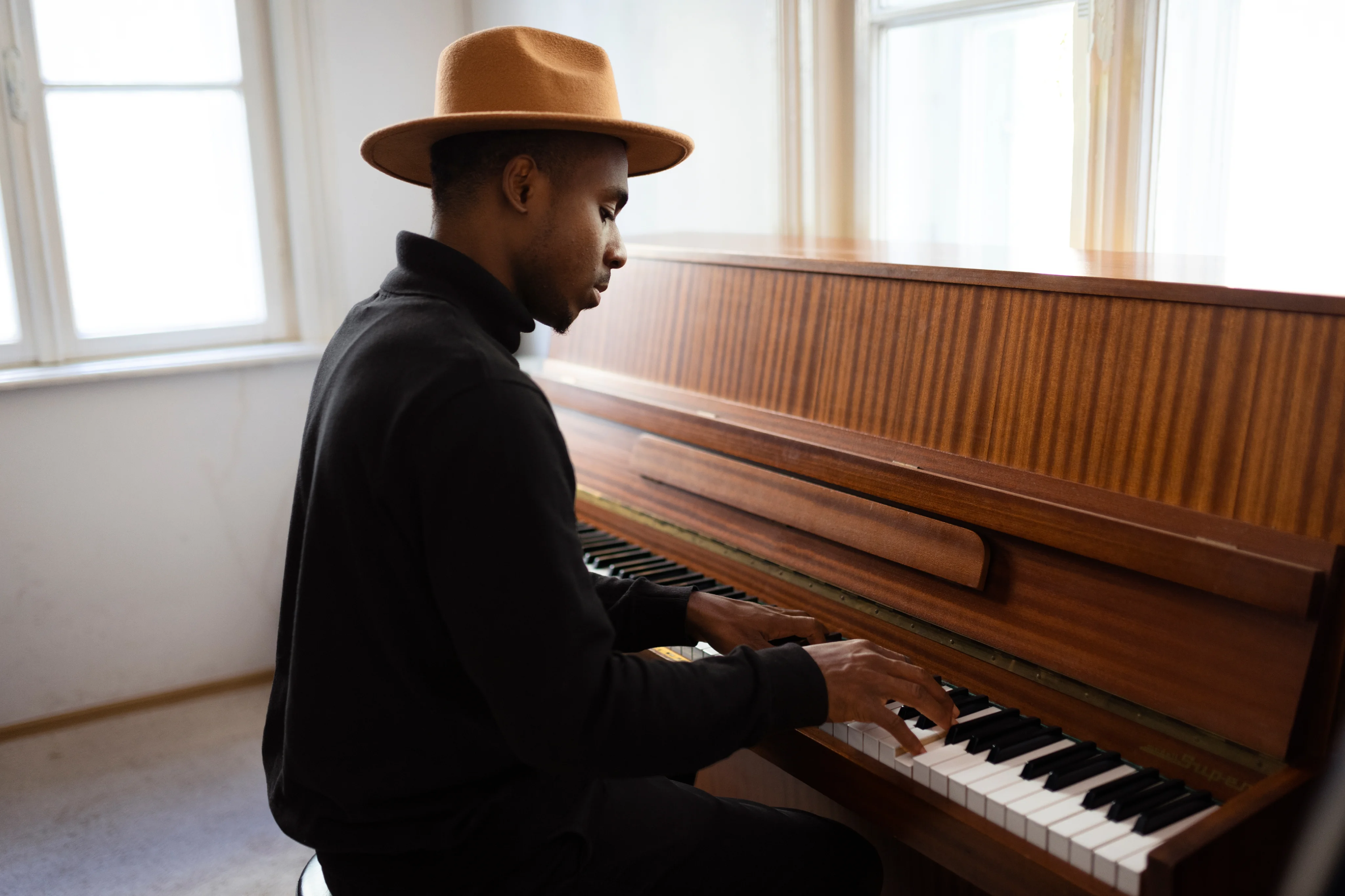
Upright pianos, also known as vertical pianos, have a compact and vertical design, making them a popular choice for homes and small spaces.
Pros –
- Space-saving – Their upright design makes them ideal for apartments or smaller rooms.
- Affordable – Typically more affordable than grand pianos, making them a great choice for beginners.
- Durability – With proper maintenance, they can last for decades to come.
Cons –
- Tone and Action – While they offer good sound quality, their smaller soundboard and shorter strings result in less resonance than a grand piano.
- Less Expressive – The action (the mechanism that moves the hammers when keys are pressed) is not as responsive as in grand pianos, making it slightly harder to play advanced pieces with dynamic variation.
Grand Pianos
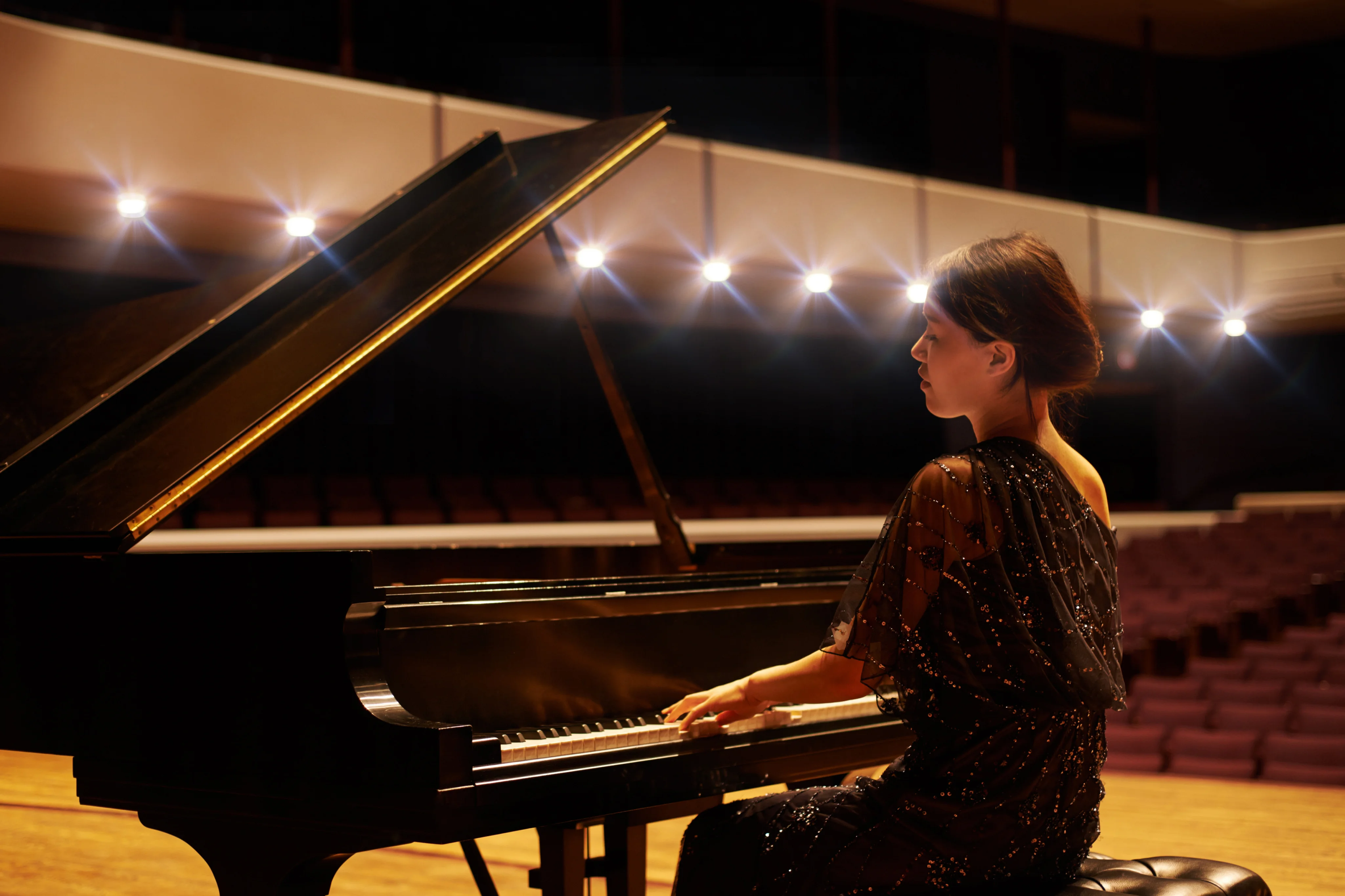
Grand pianos are the gold standard among the types of pianos for professional pianists and serious learners. They have a horizontal design, allowing longer strings and a larger soundboard, which enhances the sound quality to the next level. Piano lessons for beginners will help you understand the pros and cons of grand pianos in detail.
Pros –
- Superior Sound – Rich and resonant tones with excellent sustenance and dynamic range.
- Responsive Action – The horizontal design allows gravity to aid in hammer return, offering a quicker response and better control.
- Aesthetic Appeal – Grand pianos are stunning instruments that add elegance to any space.
Cons –
- Expensive – High-quality grand pianos can cost quite a lot and be a significant investment.
- Space Requirements – They require a large space and are not very easy to move.
- Regular Maintenance – Needs frequent tuning and care to maintain its sound quality.
These types of pianos are best taught in piano classes for advanced learners, professional musicians, and those who prioritize sound quality and performance.
Digital Pianos
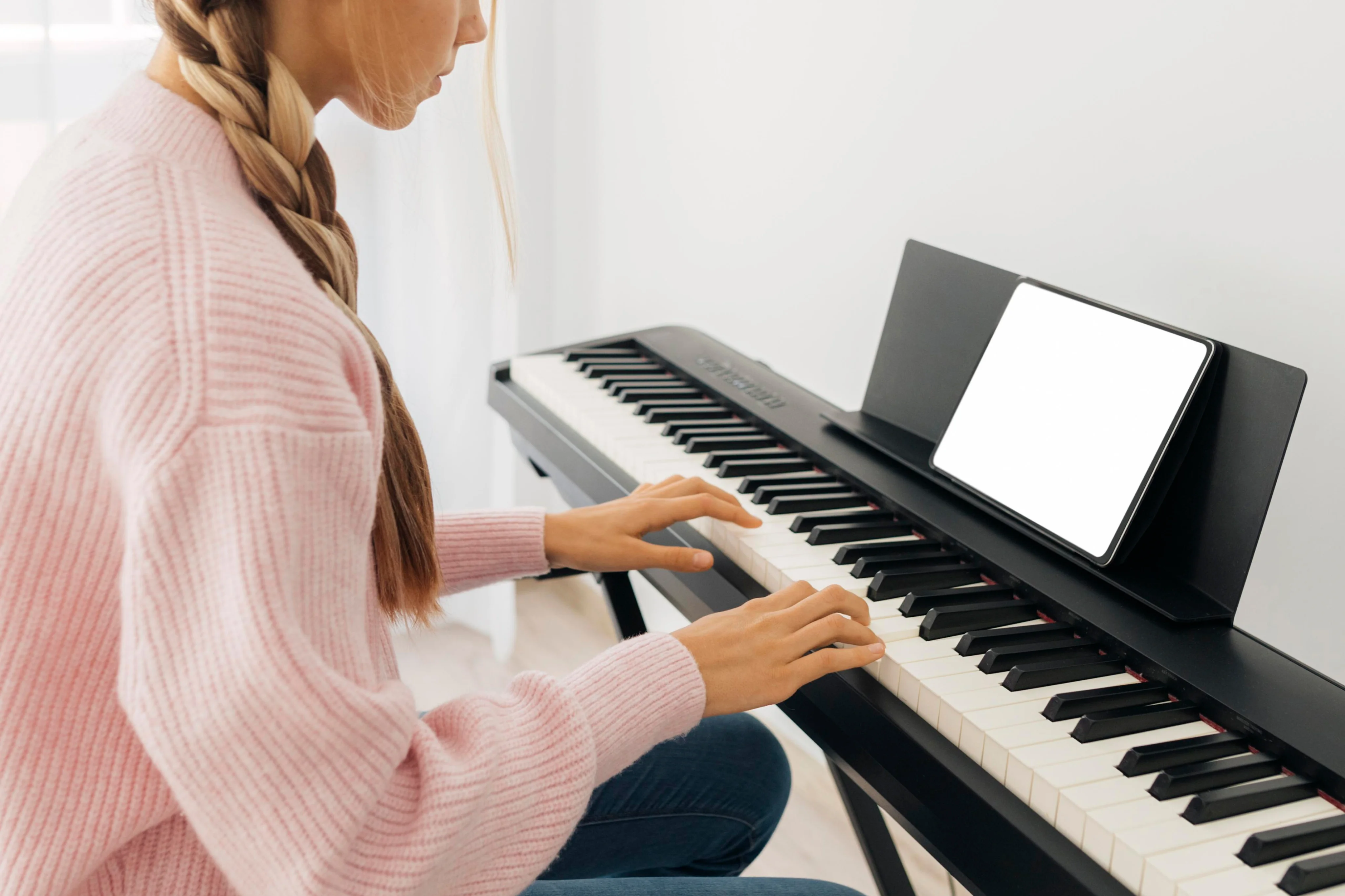
In piano lessons for beginners, students are taught that digital pianos replicate the sound and feel of acoustic pianos using electronic sampling and weighted keys. They are a modern and versatile option.
Pros –
- Affordable and Portable – Great for beginners who want an entry-level option without a major investment.
- Volume Control and Headphones – Perfect for late-night practice without disturbing others.
- Additional Features – Many digital ones are the types of pianos that come with a built-in metronome, recording functions, and multiple instrument sounds.
- No Tuning Necessary – Unlike acoustic pianos, digital pianos do not require regular tuning.
Cons –
- Lacks Acoustic Depth – While high-end models are impressive, digital pianos still do not match the organic sound and resonance of an acoustic piano.
- Key Action Variability – Some models may not fully replicate the feel of an acoustic piano’s weighted keys.
These pianos are best for beginners, casual players, and those who need a portable or budget-friendly option.
How to Select the Right Piano for Your Needs?
Choosing the right type of piano depends on many factors:
- Skill Level – If you’re a beginner, a digital piano or an upright piano is a great starting point. More advanced players may prefer an upright or grand piano for better tone and action.
- Budget – Digital pianos are the most affordable, followed by upright pianos, whereas grand pianos are a long-term investment.
- Space Availability – Consider the size of your room. Grand pianos are the types of pianos that usually require the most space, while digital and upright pianos fit easily into smaller areas.
- Purpose – If you plan to perform or take music seriously, an upright or grand piano will serve you better in the long run. If you just want to learn to play the piano as a hobby, then a digital piano is a great option.
- Maintenance – Acoustic pianos (both upright and grand) require regular tuning, while digital pianos need minimal upkeep.
By considering these factors, you can make a choice that suits your lifestyle and musical aspirations.
Online Piano Lessons: How to Learn Piano on Any Instrument?
No matter which type of piano you choose, the good news is that you can start learning immediately! Thanks to online piano lessons, you don’t have to wait until you own the perfect instrument. Here is how you can learn to play on any piano:
- Start with Basic Music Theory – Learn about notes, scales, chords,s and rhythm. Many online piano courses provide structured beginner piano lessons.
- Practice Finger Exercises – Regardless of whether you have an acoustic or digital piano, finger strength and agility are crucial. Simple exercises like scales and arpeggios help build technique.
- Follow Video Tutorials – Online platforms offer step-by-step beginner piano lessons that cater to different learning paces.
- Use Apps for Guidance – Music learning apps like Artium Academy can make learning fun and interactive for students.
- Play with Backing Tracks – Many digital pianos offer built-in accompaniment tracks to make practice sessions more engaging.
The key to success is consistency–regular practice will help you improve, no matter which piano you use.
Find the Right Piano to Start Your Musical Journey
Choosing the right type from types of pianos is an important first step in your musical development. Whether you opt for an upright, grand, or digital piano–each instrument has its charm and benefits. Beginners and hobby learners alike may find digital pianos a practical choice, while those who want an authentic acoustic experience may prefer an upright or grand piano.
At Artium Academy, we offer expert-led online piano classes that are designed for learners of all levels. Our structured piano online course, personalised guidance and interactive lessons make it easy to learn piano at your own comfort and pace. Begin your music journey with us today and discover the joy of playing the piano.
FAQs
Q. How many types of pianos are there?
Ans: Upright pianos, Grand pianos, and Digital pianos are the three most commonly used pianos by learners and professionals today. Each of these pianos has unique features that are suited for different needs. An upright piano is compact and suitable for home use, a grand piano is perfect for professional settings due to its unmatched quality, and a digital piano is affordable, portable and the most preferred option for modern learners.
Q. What is the nicest sounding piano?
Ans: While the piano in itself is a nice sounding instrument, the Grand piano is often widely regarded as the nicest sounding piano. Its large soundboard, longer strings and horizontal design allow for a richer, fuller and more resonant tone. It is most preferred by concert pianists and serious learners due to its dynamic range and responsiveness.
Q. What type of piano is best for beginners?
Ans: Ideally, for beginners, a digital piano or an upright piano can be good choices. A digital piano is a budget-friendly, low-maintenance option with features like volume control and headphone support. An upright piano offers a great acoustic experience in a space-saving design.
Q. What type of instrument is a piano?
Ans: A piano is a unique instrument because it is classified as a keyboard instrument but also falls under the category of percussive string instruments. This is because it produces sound when small hammers inside the piano strike tightly stretched strings as you press the keys. It combines features of both string and percussion instruments.
Q. What’s the most popular type of piano?
Ans: An upright piano is the most popular type of piano. Its compact design, affordability and good sound quality make it a preferred choice for daily use. It strikes the right balance between size, cost and musical performance.
Q. What’s the most expensive type of piano?
Ans: The most expensive type of piano is the Grand piano. Especially the ones made by top manufacturers like Bosendorfer or Steinway & Sons. The price range for these instruments often range from lakhs to crores of rupees, depending on its size, brand and craftsmanship.

